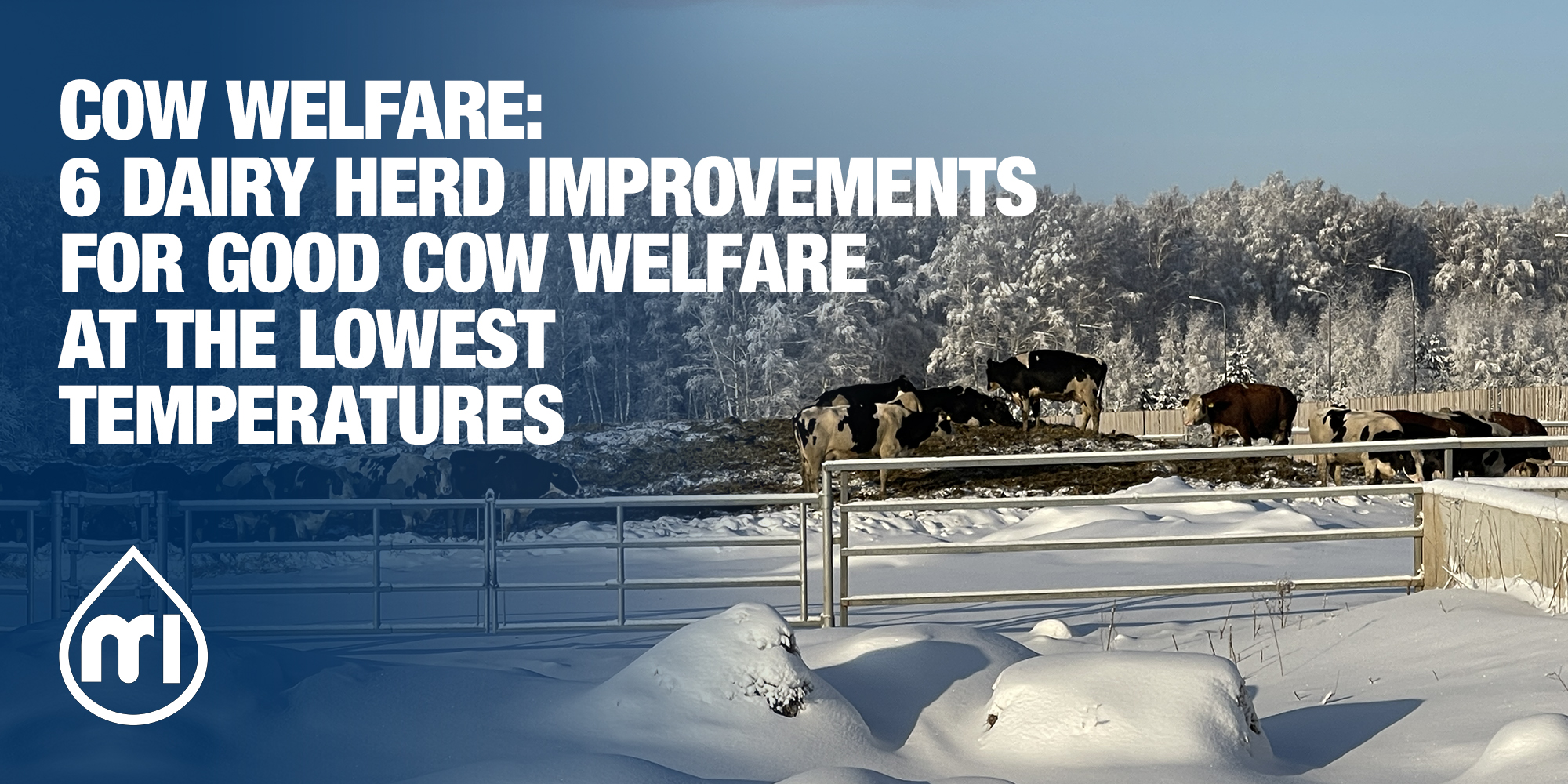
Cow Welfare: 6 dairy herd improvements for good cow welfare at the lowest temperatures
How can you recognize if your cow’s welfare is good or bad? And why prioritizing it is crucial for the efficiency of your farm? Let’s find out in this Blog series!
We closed the previous episode by listing the three crucial dairy herd improvement groups, to preserve animals’ welfare at the lowest temperatures.
So, with the help of Pavel Semenychev, Technical Sales and Support Manager from Russia, we are ready to deep dive into the main actions that could save the efficiency of your farm in extremely cold weather conditions.
Let’s start with environmental improvements
- Balance is the key. The barn should be a dry, well-insulated shelter where cows escape from wind and snow. Therefore, the building should be designed taking into account the force of the winds blowing in the area. Some useful implementations could be:
- Placing the door only on one side of the shed.
- Surrounding the barn and the pasture area with a windbreak made up of semi-permeable trees and under-planting. It decreases the wind speed and protects animals from air drafts.
Nevertheless, sheds should not be too warm or wet, either. In fact, this commonly happens when there is insufficient airflow and respiration gasses remain trapped in the barn, causing humidity and the spread of germs. A humidity level above 60% can cause lung irritation and even contagious respiratory infections, such as pneumonia. Excessive condensation on the windows, ceiling, or ground indicates insufficient ventilation in your barn and the need to improve the air quality by ensuring a fresh air flow, through windows or fans.
- Beware of ice. Frozen walking surfaces can be a cause of serious stress and injuries for your animals. This is why you should protect the floor from ice, by using particular reagents that are safe for animals, or with a hot water flow.
It’s time to talk about feeding improvements
- Feed for thought. The lower the environmental temperature, the more energy cows require to endure the harsh climate condition and produce heat. In general, during winter cows eat 10-15% more feed than in summer, requiring a thorough adjustment and supplementation of the nutrients to the body conditions of each animal. As previously mentioned, Herd Management software and consultants’ advice are the keys to ensuring that cow well-being thrives in winter.
- Tips for optimal hydration. As usual, access to clean, fresh water should be ensured for cows, removing any trace of bacteria on a regular basis. Though, with extremely low temperatures, water can freeze. To avoid this, it is advisable to rely on insulated waterers or a water heater. If the latter is electric, it is essential to make sure there is no electricity in the water using a voltmeter.
Last but not least: cow comfort!
- Good bedding for good rumination. We have already mentioned how crucial lying time is for proper rumination and consequent milk production and cow welfare. When the weather outside is cold and wet, ensuring cows dry, clean bedding, insulated from the cold ground, is the key to a warm, comfortable lying.
- Watch out for frozen teats. With cold weather, wet teats can get frozen, causing skin cracking. To avoid this, it is extremely important that they are completely dry when cows exit the milking parlour.
We hope these hints on how to preserve your cows’ well-being in the lowest temperatures will be useful and will help you improve the performance of your herd. Also, make sure not to miss our next updates, to achieve your milking goals!
Sources:
- How to reduce heat stress in dairy cattle Keown, Grant - University of Missouri Extension, 1993
- Managing cow welfare in the winter months Wedzerai – DairyGlobal, 2023
- Winter animal care: tips to keeping your animals healthy and happy during winter months Ockert – Michigan State University Extension, 2023
